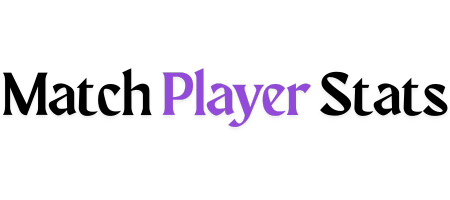In today’s hyper-competitive business landscape, the visual identity of your brand plays a crucial role in determining its success. One of the most impactful components of that identity? Your logo.
Creating a logo isn’t just about fancy graphics or stylish fonts—it’s about strategically crafting a symbol that represents your brand, tells your story, builds recognition, and instills trust in your audience.
In this comprehensive guide, we will dive into why logos matter, how to create one, and how a great logo can bolster your brand in today’s digital world.
What Is a Logo and Why It Matters
A logo is a visual symbol that represents your brand’s identity, values, and mission. It’s the face of your business—the first thing people recognize and the image they associate with your products or services.
Whether it’s Nike’s swoosh, Apple’s bitten apple, or McDonald’s golden arches, powerful logos evoke instant recognition and emotional connections.
Your logo isn’t just a design—it’s the foundation of your branding.
Benefits of a Strong Logo for Branding
Creating a high-quality logo does more than look good—it provides several strategic advantages:
- Instant Recognition: A memorable logo ensures people immediately associate your visual with your brand.
- Professionalism: A polished logo builds credibility and trust.
- Emotional Connection: Great logos evoke feelings and trust, crucial for customer loyalty.
- Brand Consistency: A logo unifies your messaging across all platforms (website, social media, packaging).
- Competitive Advantage: An eye-catching logo can help you stand out in a crowded marketplace.
The Psychology Behind Great Logo Design
Every color, shape, and font in your logo affects how people perceive your brand. Here’s how:
- Blue: Trust, reliability (used by Facebook, LinkedIn)
- Red: Passion, urgency, excitement (Coca-Cola, YouTube)
- Green: Growth, health, freshness (Starbucks, Whole Foods)
- Yellow: Optimism, warmth, clarity (McDonald’s, Snapchat)
- Black: Sophistication, elegance (Chanel, Nike)
Shapes matter too:
- Circles = Community, unity
- Squares/Rectangles = Stability, professionalism
- Triangles = Power, direction, innovation
The psychology of logo design helps shape how your audience interprets your brand—even before they read a word.
Key Elements of an Effective Logo
Here are the must-have ingredients for a logo that supports and strengthens your brand:
- Simplicity – Easy to recognize and remember
- Relevance – Reflects your industry, audience, and values
- Scalability – Looks great on a website, a billboard, or a pen
- Versatility – Works in color, black-and-white, or reversed
- Uniqueness – Stands apart from competitors
- Timelessness – Avoids trends that make it look dated in a year
Steps to Create a Logo to Bolster Your Brand
Want to Create Logos to Bolster Your Brand that truly works for your brand? Follow these steps:
Step 1: Define Your Brand Identity
Ask yourself:
- What are your brand’s core values?
- What personality traits define your business?
- Who is your target audience?
Step 2: Research Your Industry and Competitors
Find out what visual styles dominate your niche—and look for opportunities to stand out.
Step 3: Choose Your Design Style
From modern and minimal to classic or playful, your design style should align with your brand voice.
Step 4: Select the Right Colors and Typography
Color and font choices should convey the right emotion and be legible across all platforms.
Step 5: Sketch Concepts
Start with rough sketches. Explore different ideas before jumping to software.
Step 6: Design Using Professional Tools
Use tools like Adobe Illustrator, Canva, or Looka to bring your logo to life digitally.
Step 7: Test and Refine
Get feedback from trusted peers, clients, or your target market. Make adjustments accordingly.
Step 8: Finalize and Prepare Formats
Export your logo in all necessary formats (PNG, SVG, EPS, PDF) for both print and web.
Tools and Resources to Design a Logo
You don’t need to be a professional designer to create a great logo. Use these tools:
- Canva – Easy drag-and-drop interface, free and paid options
- Looka – AI-powered logo maker
- Hatchful by Shopify – Free tool tailored for entrepreneurs
- Adobe Illustrator – Advanced tool for full customization
- LogoMakr – Simple online editor for quick designs
Or consider hiring a professional designer on platforms like:
- Fiverr
- Upwork
- 99designs
Common Logo Design Mistakes to Avoid
When creating a logo, avoid these pitfalls:
- Overcomplicating the design
- Copying competitors
- Using too many colors or fonts
- Ignoring scalability and readability
- Not testing it across platforms
Rebranding: When and How to Redesign Your Logo
Sometimes, updating or redesigning your logo is necessary to reflect business growth, a shift in values, or a new audience.
Signs You May Need a Logo Redesign:
- Outdated or irrelevant look
- Doesn’t resonate with your current audience
- Major brand repositioning or name change
- Low-quality or inconsistent versions
If you do rebrand:
- Stay aligned with your brand story
- Communicate changes clearly to your audience
- Maintain some visual elements for brand continuity
Real-World Examples of Logos That Transformed Brands
- Airbnb: Their 2014 rebrand introduced the “Bélo” symbol, representing belonging—perfectly matching their brand values.
- Pepsi: Multiple iterations modernized its image while maintaining familiarity.
- Instagram: Transitioned from a retro camera to a sleek gradient—matching modern UX and visual appeal.
These transformations didn’t just change appearances—they influenced brand perception globally.
Conclusion: A Great Logo is the Start of Great Branding
Your logo is more than an image—it’s the heart of your brand’s identity. Creating a logo that resonates with your audience can bolster your brand, build trust, and set you apart in the marketplace.
Whether you’re launching a startup or rebranding an existing business, take the time to create a logo that reflects your brand’s mission and values—because in a world full of noise, visual impact speaks louder than words.






